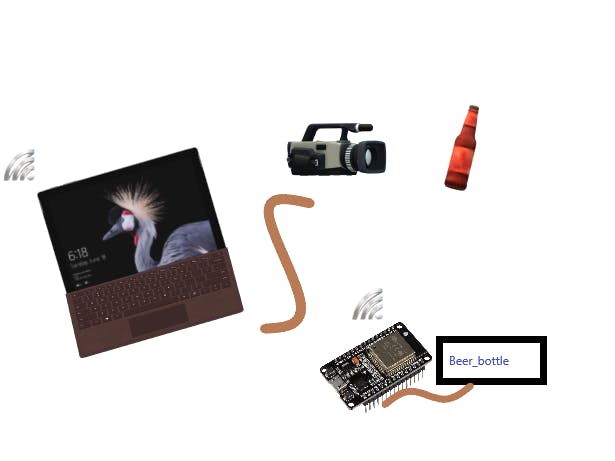Object detection and identification is one of the most important and challenging branches of computer vision, which has been widely applied in peoples’ life, such as monitoring security, autonomous driving, and so on, with the purpose of locating instances of semantic objects of a certain class. With the rapid development of deep learning networks for detection tasks, the performance of object detectors has been greatly improved. By using Machine Learning and ResNet, we can easily identify the names of the objects which we needed. For this, firstly the training data is fed to the machine and labeled it correctly based on the nomenclature. By using the Camera Module, the test data is detected and verified with the train data using the ResNet algorithm. By repeated testing of the objects, the data set is updated or deleted based on the errors made by the machine in identification. On the repeated iteration of identifying the objects correctly ie., Accuracy reaching ≥ 95%, the dataset, and the application is used in Real World for automation. For this, I use Keras, an open-source neural-network library written in Python and by using the IoT module, the identified data is transferred to the Display device wirelessly. In Real-Time, this project is used for the identification of objects with more than 95% accuracy and transmit the data from anywhere and anytime using the cloud, and completely automate the process and reduces the manpower.
ESP32 :
Engineered for mobile devices, wearable electronics and IoT applications, ESP32 achieves ultra-low power consumption with a combination of several types of proprietary software. ESP32 also includes state-of-the-art features, such as fine-grained clock gating, various power modes and dynamic power scaling.
Operations:
Operations of this project Simply described by this block diagram. An Ip camera collects capture the object image then sends to PC. PC predicts the object in the image using Deep learning algorithm. Now predicted information sent over wifi network to ESP32 IoT devices.
Operation in Tamil:
இந்த திட்டத்தின் செயல்பாடுகள் இந்த தொகுதி வரைபடத்தால் விவரிக்கப்பட்டுள்ளன. ஒரு IP கேமரா சேகரிக்கும் பொருள் படத்தை பிசி பின்னர் பிசிக்கு அனுப்புகிறது. Keras Deep learning வழிமுறையைப் பயன்படுத்தி PC படத்தில் உள்ள பொருளை முன்னறிவிக்கிறது. இப்போது கணிக்கப்பட்ட தகவல்கள் வைஃபை நெட்வொர்க்கில் ESP32 IoT சாதனங்களுக்கு அனுப்பப்படுகின்றனKeras
is an open-source neural networklibrary written in Python It is capable of running on top of TensorFlow, Microsoft Cognitive Toolkit, R, Theano, or PlaidML.
Designed to enable fast experimentation with deep neural networks, it focuses on being user-friendly, modular, and extensible. It was developed as part of the research effort of project ONEIROS (Open-ended Neuro-Electronic Intelligent Robot Operating System),














Comments